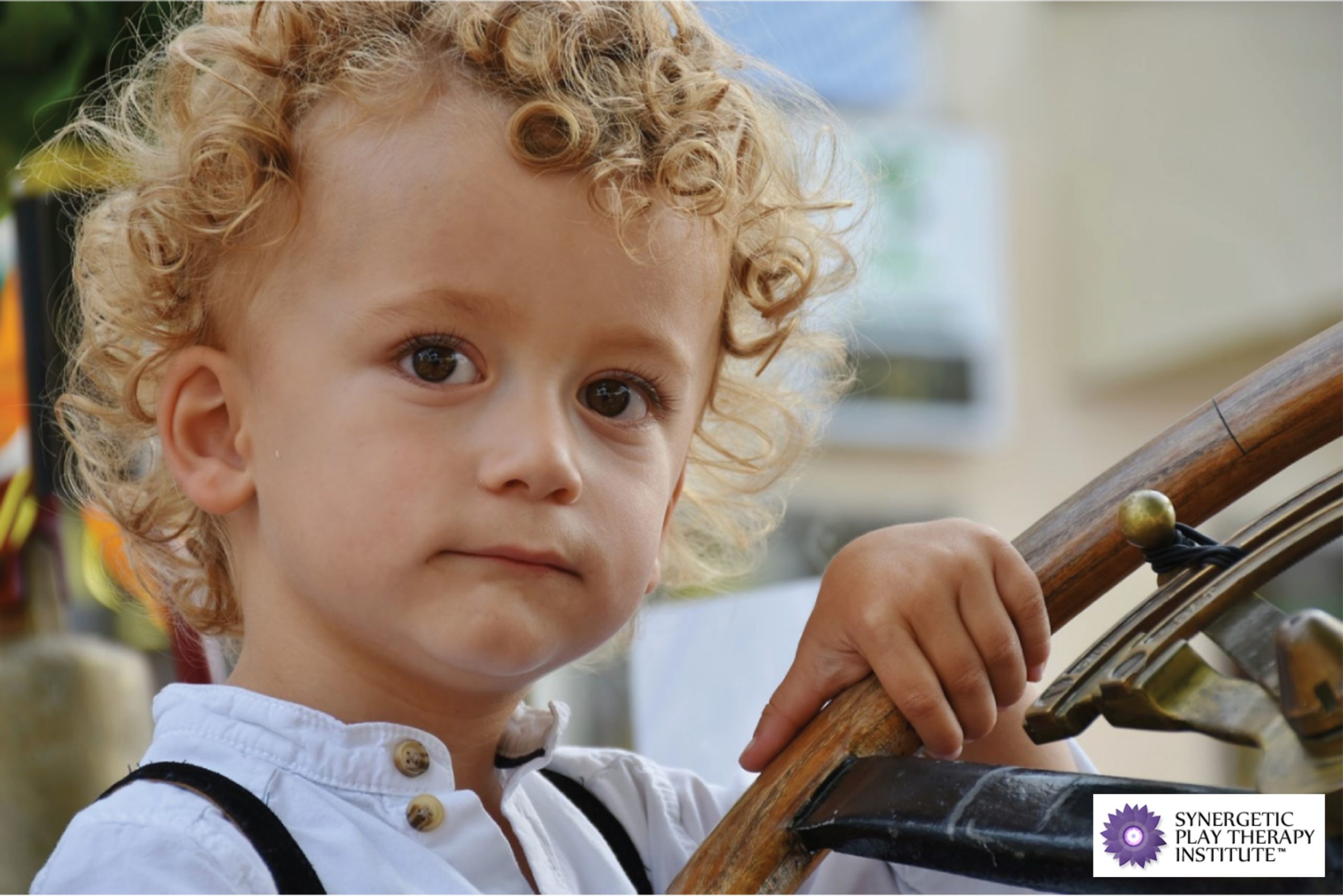By Lisa Dion, LPC, RPT-S
I once worked with a nine-year-old client named Joey*. He really struggled in school. He had a very focused interest on one thing/task, and everything else was incredibly boring to him. As a result, when the teacher would tell him he needed to study something in school that wasn’t directly related to what he loved, he got violent and acted out. In fact, he got really aggressive. That’s why he came to me. One day in the playroom, he asked me to put a little stuffed dog in a car seat while instructing me exactly how to do it. “Make the straps tighter,” he kept telling me. As I ddi, I noticed the dog didn’t look comfortable and my sense was that the straps were providing a lot of pressure and discomfort for the dog.
So using the Synergetic Play Therapy principle of having a congruent and authentic response to the child’s initiated play, I reflected to him: “I feel worried about the dog. I bet the dog is uncomfortable from the pressure of the straps. I’m not sure if I should be tightening them this much, but I’m being told that I have to.” But he just kept telling me that I had to do it while saying the dog was fine (even though the dog didn’t look fine). I began to second-guess myself, while simultaneously feeling pressured to do something that I did not want to do. I even began to feel angry.
Realizing that he was trying to help me understand how he felt, I named all this out loud. He looked straight at me as he realized that I understood. I then asked him, “I wonder if you ever feel lots of pressure at school and pressure to do things you don’t want to do.” He responded, “All the time.” Right?! … He was constantly in situations at school where his intuition told him, “I don’t want to do this; it isn’t meaningful for me; this isn’t interesting or fulfilling for me.” …. He was caught between listening to his truth and listening to what other people told him his truth should be.
In order to get to that place where I could be authentic in the playroom with Joey, I had to overcome a lot of “shoulds” that I had learned early on in my training. I had to learn about the importance of responding in a congruent and authentic way in response to the child’s initiated play so that the child felt deeply understood.
One of my turning points was meeting Dr. John Demartini; he introduced me to the concept of “shoulding.” I knew we had shoulds, but I didn’t really understand their purpose or effect on me in the playroom. I’d like to note that shoulds aren’t bad; they are simply feedback to let us know when we are being authentic or not, so we need them. However, without really understanding them, they can lead to a lot of angst and unnecessary suffering.
During the early years of my practice, I was in the playroom having experiences where I would either get hurt or I felt like something was missing. For a long time I couldn’t figure out why. What I realized was that I was “shoulding” myself. I wasn’t doing what I knew I needed to do. I had messages in my mind that I had learned in Graduate school and in other play therapy classes telling me “what a good therapist does or doesn’t do” and that “I needed to role play and act in my sessions” but my intuition often screamed at me to do something different! And sometimes it was screaming for me to say my truth out loud. But according to my training, I wasn’t supposed to say my truth out loud to a child. I was supposed to watch myself and not bring all of myself into the playroom for fear of counter-transference issues arising. So I would stop myself short of being able to fully show up.
And when I started studying John’s work, he started to challenge me on my “shoulds” and to help me see where I wasn’t being congruent in my own life. He helped me see that I wasn’t going to damage a child by being myself. I then gave myself permission and started to say out loud my truth and also to listen to those moments of intuition in the playroom. Where once I would say, “well, that’s just brain noise,” I started to get curious and wonder if that was wise information showing up in that moment to help me guide the process. I started to listen and obey the little voice that would say, “Scoot closer to her,” even though I had another voice saying, “She hasn’t invited you over, so don’t.” I started to listen to the first, stronger voice. I learned to trust that voice. And magic started to happen. And where I saw kids go in their process and what I saw transform was quite incredible.
I then overlaid my knowledge of biology, nervous system regulation, attachment, physics (yes, physics!) and mindfulness on top of that, and out came a whole new model—Synergetic Play Therapy. I now help my students trust their intuition and name their experiences out loud as a way of tuning in to their authentic selves. I teach them that there’s a reciprocal process happening in the room—a shared process—and it’s called resonance. I help them see that their clients are helping them feel what it is like to be them and that when they have the courage to be authentic and name it, magic happens.
**Names and ages changed to protect client confidentiality.






